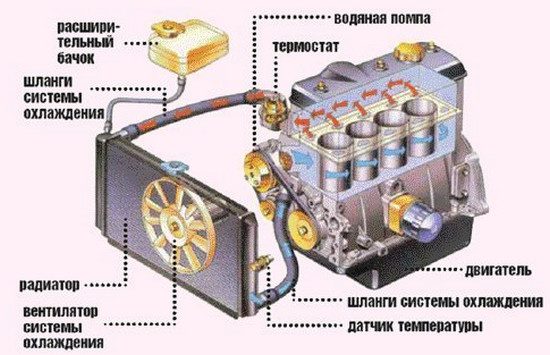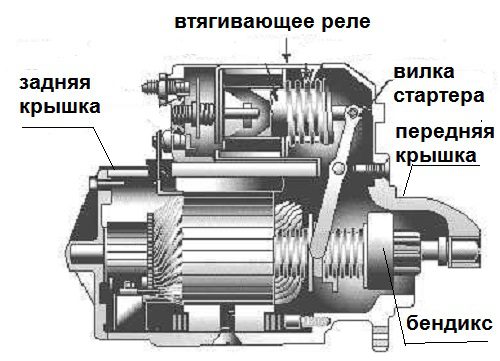
How to remove a leak from the cooling system?
Content
Fluctuations in engine temperature, a red light and smoke from under the hood of a car are the most common symptoms of damage to the cooling system and coolant leakage. There are a few things you need to pay attention to in order to reach your destination without any problems. We will advise you on how to observe a coolant leak and how to eliminate this defect.
What will you learn from this post?
- Where does the coolant flow?
- What are the most common causes of cooling system failures?
- How to remove a leak from the cooling system?
- How to prevent refrigerant leakage?
Shortly speaking
Leakage of fluid from the cooling system is a malfunction that can be avoided. The system is probably damaged if there is a puddle of fluid on the ground under the vehicle, or an unusual noise from the radiator is heard from the radiator. This is usually caused by worn rubber hoses and seals or corroded terminals. The solution is to replace the worn part or, in some cases, use a two-component adhesive.
Where does the coolant leak most often?
Cooler
The vertical fins of the radiator are where the coolant exits. Leakage occurs due to corrosion, defects and aging of the component.... A leaking radiator will be wet at the bottom and you will notice a thin trickle of fluid that is projected onto the engine. A few years ago, the radiator was repaired by soldering. Today it is enough to glue with two-component glue, but You will get a long-lasting and reliable effect by replacing the radiator with a new one.
Coolant pump
A worn pump and its bearings are a common cause of coolant leakage. To prevent this crash, replace the pump in time - usually every 150-60 kilometers. In the case of cars with a timing belt, the interval is reduced to 70-XNUMX thousand kilometers. Characteristic of pump wear is the noise it makes and the confirmation. spots on the recess in the body.

Cooling pipes
The coolant pipes are constantly in use, so check (especially in older machines) that whether they have hardened, crumbled or foamed. Leakage occurs at the attachment points through the clamps. If they are rusted or their ends are too low on the connectors during assembly, the rubber hoses are not tight enough. Sometimes too much pressure on the cable ends causes a break. If necessary, you can cover the damage with self-vulcanizing rubber tape.so you can easily reach the mechanic. However, in the long run, this solution will not work, so replace the damaged elements with new ones as soon as possible.
Head connection
The head connection is the connection from the engine block to the radiator that contains the thermostat housing. Made from plastic. It happens that too much tightening leads to cracks. The reason is also a poorly installed or worn gasket at the junction of the pipe with the engine - this is indicated by the white color of the exhaust gases. For immediate repair, silicone or two-component adhesive is enough. Anyway, to avoid sudden pulling out of a stressed connector and rapid leakage of coolant, install a new head and replace the worn out gasket.
Do not add water to the cooling system.
To prevent coolant leakage, use good quality coolant to avoid corrosion in the cooling system. In theory, you should replace every two years – after this time, the active ingredients no longer protect this component from corrosion.
Due to the risk of rust do not pour tap water into the systemwhich does not protect against extreme external temperatures. In freezing weather, it will turn to ice and restrict the flow of coolant and cause the engine to overheat. Water, due to the fact that it boils at 100 degrees Celsius, and the engine runs at about 90 (+/- 10 degrees Celsius), gives off heat, begins to boil and evaporate, and therefore leads to overheating of the power unit... Tap water also causes limescale deposits on the system components. can blow up a radiator. The work of the cooling system is to remove excess heat from the engine and warm up the interior of the car. A clogged heater prevents it from working properly. Manifested leakage of liquid on carpets in the area of the center of the console, evaporation of windows and an unpleasant smell of air emanating from the heater.

Regular checks will reduce the risk of coolant leaks.
The main thing to keep the cooling system in perfect condition is to regularly check the rubber hoses - they must be flexible when kneading. If they appear cracked, hardened or crushed, they should be replaced with new ones. It is worth paying attention to the condition of fasteners and tapes - and replace those that have suffered from corrosion. The place where the car is parked must not be left with liquid stains.. The coolant level is also checked - this is the easiest way to find a leak. If the radiator has received mechanical damage as a result of an accident, it should be replaced as soon as possible.
The cooling system is one of the most important vehicle components. regulates the level of heat in the passenger compartment and increases the comfort of movement, and most importantly, maintains the operation of the engine.... That is why it is so important to keep it in good condition. If you are good with car repairs, you will save a lot on costly replacement. At avtotachki.com you will find fluids, coolers and system components at attractive prices.
Learn more about coolant and system failures:
https://avtotachki.com/blog/uszkodzona-chlodnica-sprawdz-jakie-sa-objawy/
https://avtotachki.com/blog/czy-mozna-mieszac-plyny-do-chlodnic/
https://avtotachki.com/blog/typowe-usterki-ukladu-chlodzenia/
www.unsplash.com
